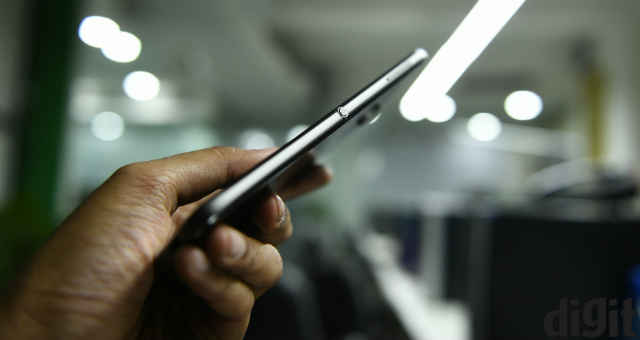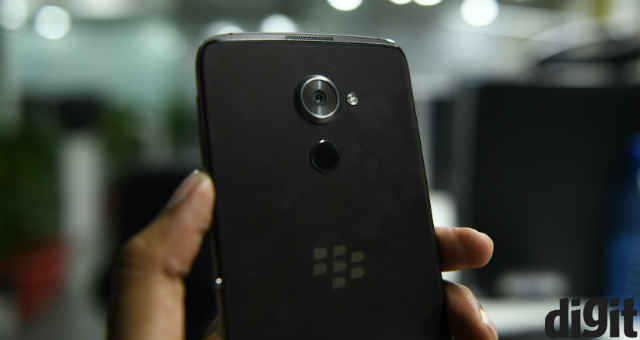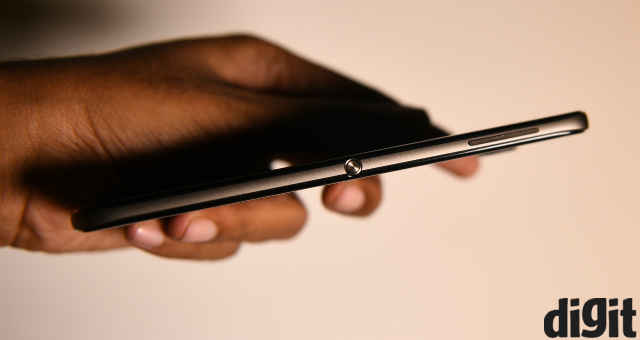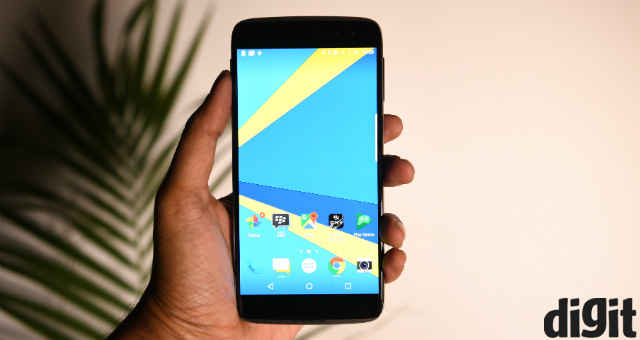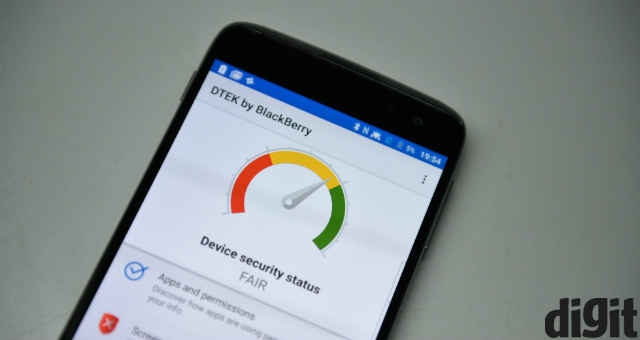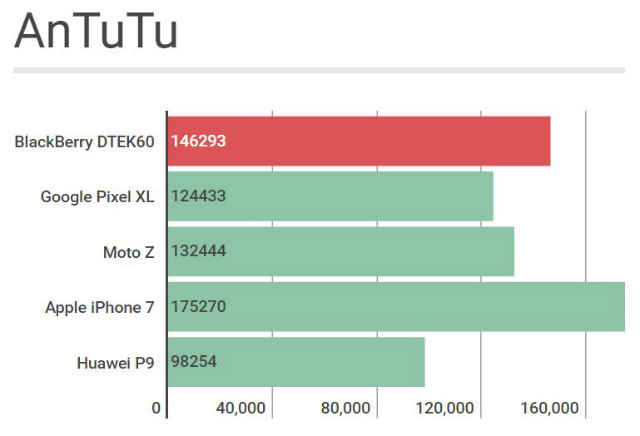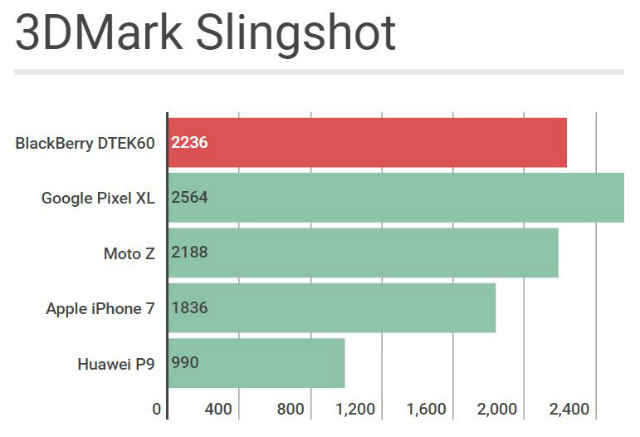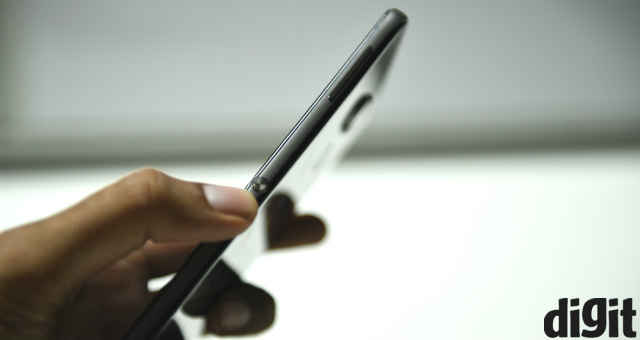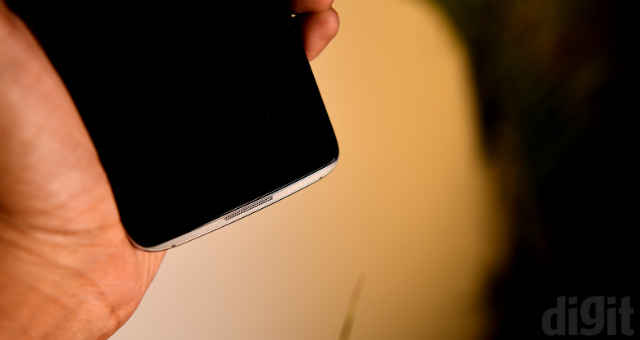BlackBerry DTEK60 Review : Too little, too late
When BlackBerry announced the DTEK 60, there was considerable skepticism surrounding how the phone would fare. All that has been put to rest by a fine smartphone that is built well, looks premium, has a crisp display, stock Android Marshmallow with promised Android Nougat update, dependable performance, a decent camera and stellar in-phone speakers. The only qualm is the lack of a more reliable battery, and otherwise, the BlackBerry DTEK 60 is actually one of the better smartphones around today.
Is it a bit too little too late? BlackBerry has seen a noticeable loss in consumer interest, and if they are to regain some of it, the DTEK 60 seems to be a good point to begin. Priced at Rs. 46,990, the DTEK 60 doesn’t really qualify as a recommendation. It’s a good phone, but so is the Moto Z, which offers exactly what this one does, minus the DTEK app.
Amid much fanfare, the BlackBerry Priv was launched last year. The flagship smartphone promised to fuse the best of BlackBerry’s security expertise, stock Android interface and the famed physical keyboard into a slide-out, touchscreen device. However, certain rough edges marred the level of effort that BB put into the device, and recently, it announced that BlackBerry will no longer manufacture its own phones, instead choosing to focus on software.
The BlackBerry DTEK 60 here is the first smartphone in India bearing the BlackBerry tag, since the company suspended manufacturing operations. BB’s partnership with TCL has seen the DTEK 60 being built on the TCL 950, which itself was manufactured by Alcatel. Along with a clean Android interface, the DTEK 60 houses enhanced security features and all the bells and whistles that you would expect from a present generation flagship smartphone. It also packs in a few neat surprises, making it quite an intriguing smartphone to use.
Read on, for our in-depth review of the BlackBerry DTEK 60.
Build and Design
The BB DTEK 60 has a fairly slim, tall profile built entirely on glass and metal. The slim yet reassuring metal rim that borders the device thickens at the upper and lower edges to accommodate two speakers on the front and two tweeters at the rear. The rear has a glass panel neatly tucked at the edge, while the front is flanked by a 2.5D curved glass panel, and BlackBerry has even tried to add some functionality to the edge.
All of this makes for a premium smartphone in terms of build, and at 6.9mm, the DTEK 60 feels plush to hold in hand. Network bands are neatly arranged and do not disturb the flow of design, and in terms of ports, the upper edge has a 3.5mm audio jack and a noise-cancelling microphone, while the bottom edge has a USB-C port and the primary microphone.
While all of this feels really seamless, the only matter of concern for me is button arrangement. The upper right edge has the volume rocker, that is placed a tad too high to reach comfortably, and the power button to the top left feels awkwardly placed.
Making matters more confusing is the Convenience Key – a multitasking button to which you can assign a specific function as per convenience. It does help slightly in usage, but more than that, confuses users because of its placement. The key is placed at the centre of the right edge, more or less at the point where other companies place it. While you do get used to it after a few days of usage, placing the Convenience key to the left could have avoided this confusion at the first place.
The other two points that play against the design are the incredibly large camera hump, and a rather vague fingerprint sensor that is not very well demarcated. The camera hump exposes the lens to the forefront, and placing it hard on the table may even damage the lens. It thankfully did not, but the risk remains.
Apart from this, though, the BB DTEK 60 is well-designed, and certainly feels sturdy and premium in hand. It may not be as stunning as the Samsung Galaxy S7 edge or as seamless as the Apple iPhone 7, but there is a neat rhythm of symmetry to the design, proportionately adjusted by the slim profile and curved glasses that aid ergonomics. All of this makes the BlackBerry DTEK 60 a well-built, good looking smartphone.
Display and UI
The 5.5-inch display uses an AMOLED panel, with screen resolution of 1440×2560 pixels. The display itself has an added touch of warmth that makes it pleasant to view videos on, and while there is a noticeable shift in hue at beyond 60 degree viewing angles, this is usual for most AMOLED panels. OnePlus notably avoided this by using an Optic AMOLED panel, although the non-pentile AMOLED panel BB has relied on does not really suffer from major discrepancies in hue and colour shifts, either.
The display also produces pleasant colours with crisp sharpness and vibrancy that makes colours really pop. Touch response is also really fluid and accurate, and we never really encountered ghost touches and swipes. The BB DTEK 60 uses near-stock Android Marshmallow, and as a result, the interface is really clean. This makes the phone feel really fast on overall terms, and there is a neat, no-clutter organisation to the phone that will appeal to many business users.
BlackBerry’s own optimisations include the DTEK security portal, which we detail in the section below. Also present is the BlackBerry Hub, which envelopes the quick access slide-out shortcuts from the right edge, BBM, notifications and more into one umbrella. The edge is not a ground-breaking addition, although for business users, it is a neat addition to quickly access reminders, contacts, emails and calendar appointments in one place. The speed of the DTEK 60 further helps here, making this an intuitive addition to the phone. BlackBerry has retained the Marshmallow app drawer and included smaller optimisations like a prominent battery percentage indicator, a green LED strip to the right edge that reads present charge and time to full charge, while charging. The DTEK 60 retains Marshmallow’s Doze feature, reiterating its neat, organised and utilitarian interface.
DTEK
BlackBerry claims that the DTEK 60 is the most secure Android smartphone right now, and the DTEK mode is pivotal to BB’s software optimisations. What the DTEK mode essentially does is to wrap all of the phone’s security features under a singular umbrella, while adding one very crucial feature of its own. By default, opening the DTEK suite gives you access to installed apps and requested permissions, data encryption status, screen lock access, factory reset protection, list of trusted app sites, and access to developer settings and OS updates.
The most important feature here is how the DTEK suite gives you easy access to all your apps, and specific permissions that each app asks for. You can, of course, toggle certain app permissions off as per preference. However, if you suspect that certain apps are using more permissions than necessary, you can choose to be alerted when the app accesses a certain permission, along with the location from where the permission was accessed. The DTEK suite alerts you about any out-of-order feature access, and you can choose to block it if you find the usage suspicious.
The best bit is how DTEK notifies you every time an app accesses a permission that you’ve set on monitor, actually making this one of the more secure smartphones out there right now. There is also a graphic indicator that tells you how safe your device is, based on features and security enhancements that you have chosen. It is this that actually makes a difference in the DTEK 60, and makes it one of the more secure Android smartphones in the market right now.
Performance
Powered by the Qualcomm Snapdragon 820 SoC clocked at 2.15GHz and 4GB of RAM, the BlackBerry DTEK 60 is amply fast – for regular apps and hardcore gaming alike. The DTEK 60 is consistently glitch-free and fluid, and app load times are kept to a bare minimal. With Facebook, Gmail, Navigation, YouTube and Asphalt 8 open, the DTEK 60 still managed to switch easily between the apps, reload them without significant wait times and even open up new apps without any noticeable wait.
Gaming performance is equally fluid, and gameplay on graphic-intensive games such as Asphalt 8 are fluid and free of stutters. The DTEK 60 does heat up on extensive gaming, though, and the device temperature rises up to 41 degree Celsius at maximum stress, which is slightly higher than optimum. The DTEK 60 does heat up on persistent usage, but does not impose heavy throttling until you really push the limits with an hour of gaming and video playback.
Despite this, the software optimisation keeps operations smooth, and even with device heat on slight rise, you can record 4K videos at 30fps, or extensively edit photographs, or even game. The battery drain is considerable, but performance-wise, the BlackBerry DTEK 60 is right up there among the best of 2016’s flagship smartphones.
The BB DTEK 60 has stable network retention, and data works well. There were no unnatural aberrations in network status, and the DTEK 60 managed to retain 3G connectivity at places where the speed often drops to EDGE. Call quality is decent, too, and the earpiece audio quality is bright and loud, which practically covers all essentials.
Camera
The DTEK 60 uses an older generation, 21MP Sony IMX230 image sensor paired with an f/2.0 lens. The camera app includes manual controls for focusing, shutter speed, colour temperature (white balance), ISO and exposure compensation in manual mode, along with fast HDR-A shooting. The camera app also includes a number of default filters within the app, and the overall app is responsive. The camera is fast, and shooting instantaneous moments is reasonably easy.
Focusing, though, is slower than the best of smartphone cameras for 2016, and so is the saving of a photograph. In comparative terms, the DTEK 60 ranks somewhere between the Galaxy S7 Edge and the Sony Xperia XZ, in terms of speed of shooting and responsiveness. Recording videos also do not lead to interference and frame tearing, keeping the camera a fairly competent unit.
In terms of image quality, colours are reasonably close to source, although there is a slight tinge of accentuated contrast that reflects more in the reds and greens. Yellows are well-optimised and blues are pleasant, making the DTEK 60 quite appealing in terms of the colours rendered.
Photographs are acceptably sharp, but subjects do not retain definite sharpness in borders. Image noise is kept at bay in brightly lit conditions, although in low light, the level of noise is quite high. Low light performance is not too great, but the availability of manual shooting allows you to better optimise settings and produce acceptable low light photographs.
The 8-megapixel front camera is reasonably sharp, too, although like most Android smartphones (barring the Google Pixel), there is a noticeable strain of softness without any enhancement or filter applied.
With this camera setup, BlackBerry has put a claim on the list of best Android phones of 2016 – not only focusing on security, but also providing commendable performance, decent photography, appreciable build quality and a good display panel.
Battery
This is possibly the only area where the DTEK 60 did not excel in our tests. PCMark benchmark data reveals 342 minutes of usage time, and in real life, the 3000mAh battery lasts for 12 hours at best, with moderate usage. The DTEK 60 drains its battery rather fast when you stream videos or play games, and I have even run out of charge in less than 10 hours, albeit with a hefty dose of video streaming and gaming.
Another slightly queer nature of the DTEK 60 is its duration of charging. From empty to 100%, the BlackBerry DTEK 60 took a whopping two hours and 31 minutes to charge. This is quite surprising, seeing how many smartphones these days offer fast charging standards of 0-100% in 40 odd minutes. Ensure that you do put it on charge once you are back from work, to wake up with full battery in the morning.
Other features: Audio playback, Fingerprint sensor
The audio playback quality is yet another pleasant surprise in the BlackBerry DTEK 60. The smartphone has two front-facing speakers and two rear-end tweeters to drive audio, and uses the Waves Maxx audio tuner to let you customise the audio balance to your preference. By default, with the equaliser switched off, the speakers on the DTEK 60 deliver rich audio with clearly discernible bass, mids and highs, and the surround setup is excellent, too. The DTEK 60 actually delivers better surround audio than the Apple iPhone 7 Plus and Sony Xperia XZ, which is saying something. The audio signature can be further enhanced with equalisers, but we left it at its default, as that seemed to be the sweet spot of audio balance.
On the contrary, the fingerprint sensor is somewhat vague and annoying. It is almost level with the rear glass panel and is only demarcated with a circular ring that covers very little area. The sensor is also placed a bit too high on the back, which makes it more difficult for people with smaller palms to reach out to it. It is fairly accurate, although setting it up is a bit irksome, as you will have to move your finger around to accommodate multiple areas of the finger being registered, and for a scanner with such a small area, this can get fairly annoying.
Bottomline
When BlackBerry announced the DTEK 60, there was considerable skepticism surrounding how the phone would fare. All that has been put to rest by a fine smartphone that is built well, looks premium, has a crisp display, stock Android Marshmallow with promised Android Nougat update, dependable performance, a decent camera and stellar in-phone speakers. The only qualm is the lack of a more reliable battery, and otherwise, the BlackBerry DTEK 60 is actually one of the better smartphones around today.
Is it a bit too little too late? BlackBerry has seen a noticeable loss in consumer interest, and if they are to regain some of it, the DTEK 60 seems to be a good point to begin. Priced at Rs. 46,990, the DTEK 60 doesn’t really qualify as a recommendation. It’s a good phone, but so is the Moto Z, which offers exactly what this one does, minus the DTEK app.

